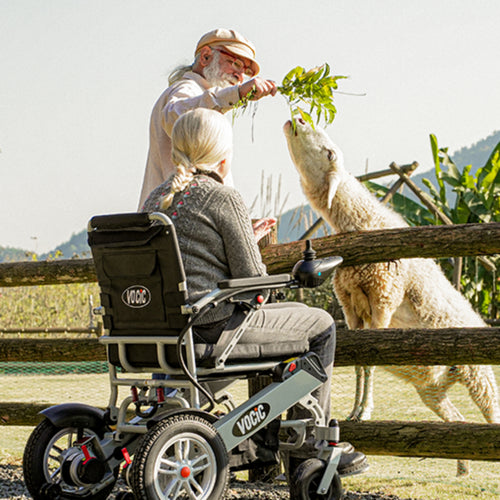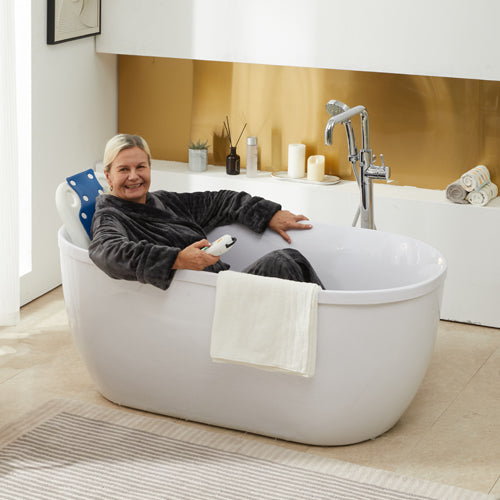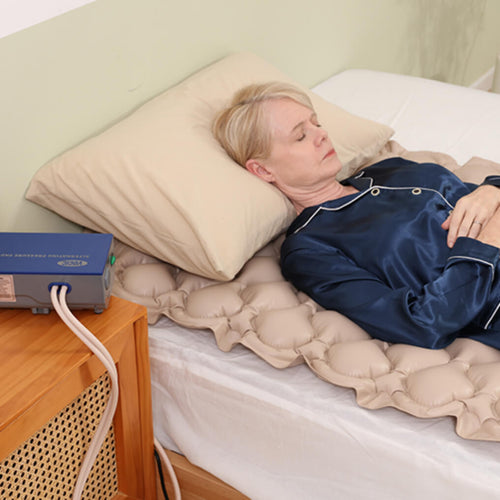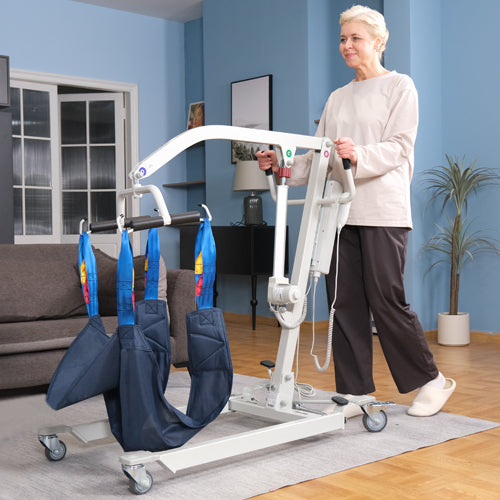Standing up from a chair can be difficult, especially when you rely on a walker for support. By using the right technique and a few simple steps, you can stand up safely and confidently.
In this article, you’ll learn how to position your walker and use your body strength to make the transition from sitting to standing smoother, ensuring a stable, easy rise every time.
Why Am I Struggling to Get Out of a Chair?
If you find yourself struggling to stand up from a chair, don’t worry. Leg and core muscle weakness is a common problem, especially as we age or recover from injury, and standing up from a seated position can become more difficult if the muscles aren’t strong enough. Additionally, conditions such as arthritis that cause joint pain and stiffness, or neurological conditions such as Parkinson’s disease, can make standing more difficult.
If your body feels unstable and you can't balance, it will be difficult to stand up, which can put you at risk of falling. Sometimes the chair itself doesn't provide enough support, which can add extra stress to the body. Therefore, identifying the cause of these difficulties is the first step to finding the right solution to help you stand up easier and safer.
What Equipment Can Help You Get Up from a Chair
If you or someone you love has trouble rising from a chair due to limited mobility, there are a variety of assistive devices you can use to make the process safer and easier, providing you with better stability, reducing your risk of falls, and increasing your independence. The following are devices that help you rise from a chair:
-
Walkers: Walkers provide stability and support when you need to stand up, and by pushing down on the handles, you can maintain balance and stand up more easily. Walkers are especially helpful if you have leg weakness or balance issues. Because walkers come in four-legged models or walkers with wheels, you can choose the one that suits your preference.
-
Armrests: Armrests give you firm support when you stand up, so you can mount them near the chair or along the wall for added support. They can also help you reduce your risk of falling and make standing safer. Plus, armrests are easy to install in various places in your home.
-
Lift Chairs: Lift chairs gently tilt forward and lift you into a standing position, making it easier to stand up. They are perfect if you have limited strength or mobility. Plus, many models offer features like heating and massage for added comfort, and electric lifts reduce the effort required to stand up.
-
Chair with Armrests: Chairs with sturdy armrests give you leverage to push yourself up, and you can use the armrests to stand up more easily and more steadily. Also, look for chairs with reinforced armrests to ensure they provide adequate support. This simple solution makes it easier to stand up.
-
Recliners with Power Lift: An electric power lift chair uses a motor to tilt the chair forward and help you stand. Therefore, they are ideal if you have trouble with leg or core strength. They also include extra comfort features like heating and adjustable positions, so you can stand up smoothly and easily.

How to Get Out of a Chair with a Walker?
If you have difficulty rising from a chair, using a walker can provide the necessary stability and support. By following a few simple steps, you can rise from your seat safely and confidently.
Position Your Walker
Position your walker at a comfortable distance in front of you so you can easily reach the handles, but not so close that your knees get in the way. Stabilize the walker and place its legs firmly on the ground, especially if it has wheels. If you are using a walker (a rolled walker), lock the wheels to keep the walker in place before you start to stand.
Sit Up Straight
Keep your back straight and your feet flat on the floor. Move your knees slightly further apart to maintain better balance. If needed, move forward in your chair to give yourself more room to stand. Leaning forward slightly helps to engage your leg muscles, making it easier to stand.
Use Your Arms for Support
Place your hands on the handles of your walker, keep your arms slightly bent, and when you are ready to stand, lean forward slightly to shift your weight forward. This will activate your leg and core muscles, taking the pressure off your arms and making it easier to stand. Also, try not to rely on the armrests or seat of your chair for support, as this can cause instability.
Push Yourself Up
Slowly lean forward and use your legs and arms to push yourself up, making sure to engage your leg muscles through your feet. Your arms will support you as you stand up. If your chair has supportive armrests, use them to help you push up.
Stand Up Slowly
Once you stand up, pause to check your balance and keep your knees slightly bent to avoid locking. The walker should be directly in front of you, and you should feel stable before taking a step. Keep your back straight and your shoulders aligned with your hips to reduce pressure on your body.
Move Carefully
Once you feel stable, take slow, controlled steps with your walker. Keep your eyes forward, not down at your feet, and move at a pace that feels comfortable. Pay attention to your surroundings to avoid obstacles, and if needed, stop and reposition the walker for better support.

How to Strengthen Your Muscles for Easier Standing?
Building muscle strength can make it easier and safer to stand up from a chair. By focusing on exercising your legs, core, arms, and balance, you'll improve your overall strength and stability. Here's how to build muscle so you can stand up more easily:
-
Leg Exercises: Build leg strength with squats, lunges, or leg presses. Start with bodyweight squats and add light weights or resistance bands as you gain strength. These exercises target the leg muscles, which are key to standing up from a seated position.
-
Core Strengthening: Strengthen your core with exercises like planks and seated leg raises. Because a strong core helps stabilize your body when standing up, it improves balance and reduces stress on your body.
-
Arm and Upper Body Workouts: Build arm strength with bicep curls, tricep extensions, and pushups. Strong arms will help you use a walker more effectively when standing up.
-
Balance and Flexibility: Improve your balance with exercises like standing on one foot or heel-to-toe walking. Stretching or yoga can also help improve flexibility, making standing easier and reducing the risk of falls.
-
Low-Impact Cardio: Regular walking or swimming can strengthen your legs and improve endurance without putting stress on your joints. These activities can improve blood circulation and overall endurance, making it easier for you to stand for longer periods of time.
Conclusion
There are several key steps to rising from a chair with a walker: positioning the walker correctly, supporting your body with your arms and legs, and rising slowly to maintain your balance. By choosing the right walker or walker with wheels, and practicing these techniques, you can build confidence and flexibility, making it easier and safer to rise from a chair. With the right technique, you'll be able to rise smoothly and effortlessly, ensuring greater independence and stability.









